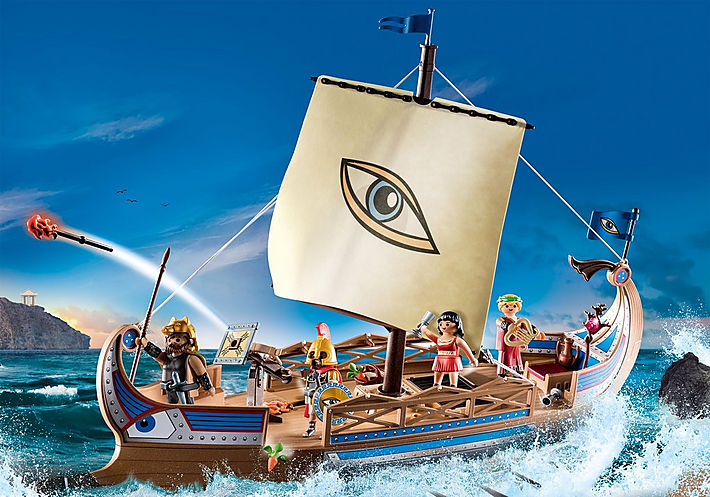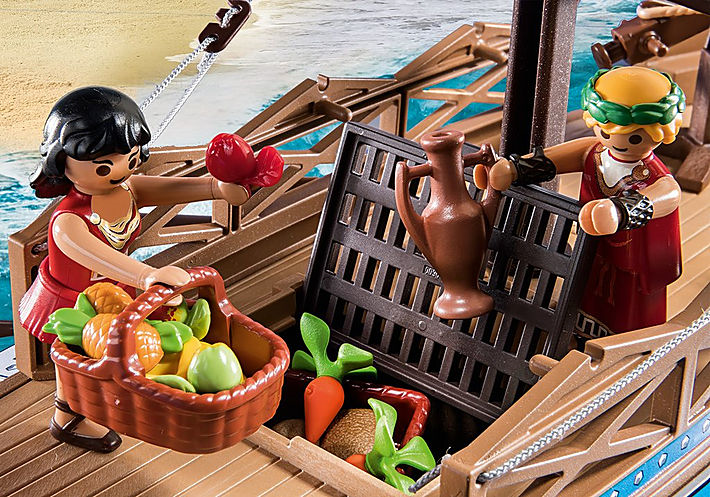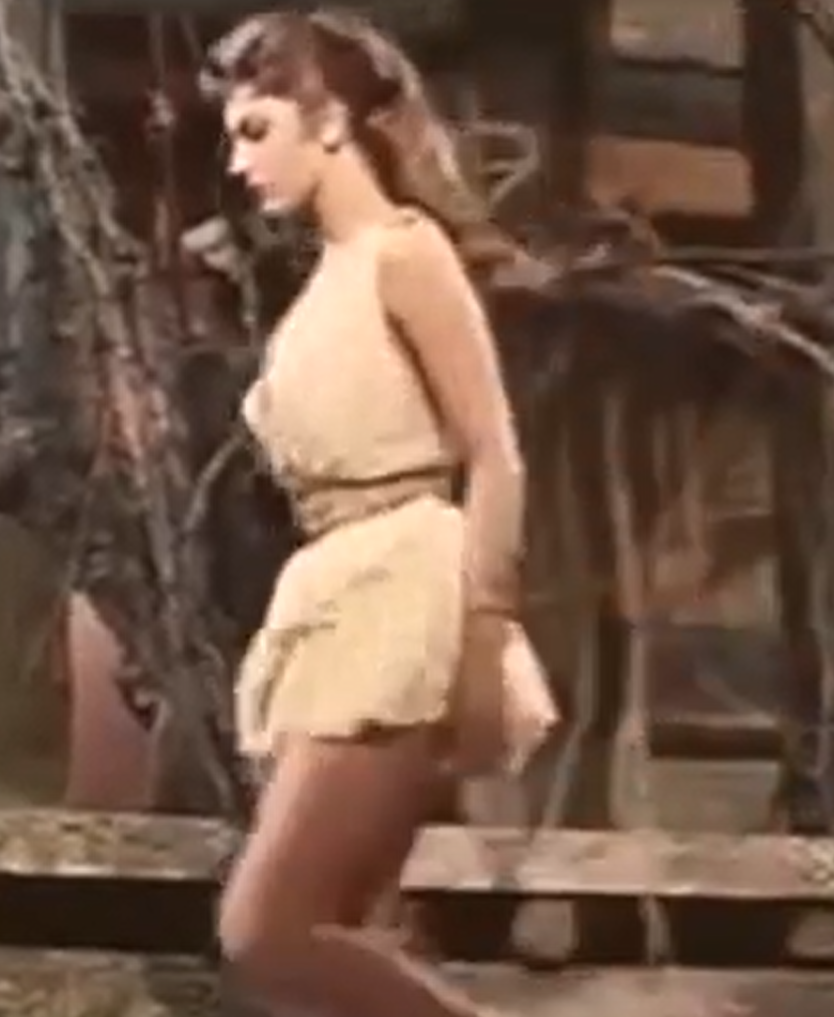September 11, 2020, by Hannah O'Regan
Medea’s picnic basket: Playmobil Argonauts
Prof Helen Lovatt writes:
I have just submitted the final final draft of my book In Search of the Argonauts and am delighted to say that I have found them, now available in the UK https://www.playmobil.co.uk/argo-and-the-argonauts/70466.html
My children, now 17 and 14, did not own enough Playmobil, and I think I should rectify this error. I may look after it for them in my office, and perhaps take it along to Special Subject lectures at the end of term. But before then, I’d appreciate people’s help with reading the new Argonauts set (below). What’s going on in their interpretation of the myth? I can definitely see Hercules (lion skin, club), Orpheus (laurel wreath, lyre), warrior in disturbingly Spartan-looking helmet (presumably Jason?) and girl with long dark hair and short tunic (presumably Medea). Where does this particular combination of attributes, personnel and imagery come from? In particular, what’s the flaming arrow and cross-bow doing here?

I’m guessing the rationale behind some of the iconography is ease of re-use from existing toys, also one of the reasons Ray Harryhausen chose skeletons for his earth-borns (he already had one from Sinbad). I can’t remember an Orpheus in the 1963 film, and the Orpheus from the 2000 film is black. I don’t think I’ve ever seen a Jason wearing a helmet like this, either, although the Earth-borns do in the Usborne re-telling by Claudia Zeff, illustrated by Stephen Cartwright.

The inclusion of Medea (or maybe, since there’s no fleece present as far as I can see, she’s meant to be Atalanta?) at least acknowledges the importance of women in the story and perhaps is intended to encourage girls to join in playing and buying it. Ironic to see Medea (above) taking charge of the picnic basket, though. Vaguely, and disturbingly, reminiscent of the basket that appears in one children’s version from which she pours the limbs of her brother Apsyrtos. Also, are those carrots hanging off the side of the ship? And did she magically create the pineapples?
The style of Medea’s costume evokes Iole from the 1958 sword and sandal film, released in the US as Hercules. The prominence of Hercules, and Orpheus with long costume and lyre, also evokes this version, but Jason is quite different.

The choice of red for Medea’s costume (also for that of Orpheus) perhaps evokes the 2000 mini-series, in which the Colchians wore red. The shape of the Argo also matches the 1958 Argo, although the colours (wood with blue-painted band under rowlocks and white sail) matches the 2006 reconstruction, now in Volos.
Hercules’ costume also seems similar to that of Steve Reeves, and I note that the same Hercules figure features in the Hercules’ Twelve Labours set, which includes an excellent hydra. The possibilities of combining the sets are intriguing. You could set Hercules against his evil twin. Given that the 1958 Hercules gets the girl, Jason might feel quite outnumbered.
This Argo is very much in the spirit of the Argonaut myth, which has a highly varied tradition, particularly rich in children’s texts. By turning it into a toy, Playmobil have enhanced the opportunity for countless new versions of the story, and eclectic mash-ups with gladiators, pirates, ponies and fire engines.
Previous Post
The chase beginsNo comments yet, fill out a comment to be the first

Leave a Reply